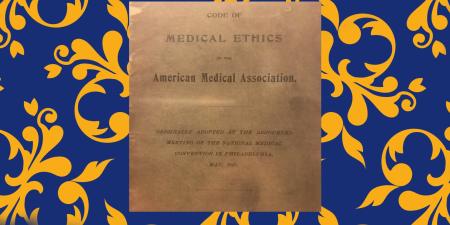Abstract
Values, preferences, and goals all affect patient autonomy. Their meanings are often conflated, so this article clarifies them and also distinguishes between hope and wish. Ethical investigation of preoperative and postoperative clinician-family communication in surgical intensive care units is needed to help mitigate value-incongruent, nonbeneficial operations and postoperative treatments as clinical scenarios unfold.
Communication as Covenant
Patients value having a sense of purpose, functional independence, meaningful interactions with family, spirituality, and avoiding burdening their loved ones.1,2,3,4,5 Surgeons are often more technique-oriented than people-oriented “fixers”6,7,8 who feel an intense sense of duty to their patients9,10 and strive for technical excellence.11 Preoperative communication in high-risk surgical scenarios has been described as a kind of covenant,12 with patients (and perhaps their loved ones) often assuming that a surgeon can fix any ailment and respond to complications13,14 and with surgeons assuming that patients agree to any postoperative surgical intensive care unit (SICU) interventions.5,15,16,17 This article considers how continuing to see patient-surgeon communication as a covenant requires deeper ethical investigation into both surgeons’ and patients’ assumptions and into sources of dissonance between surgeons’ and patients’ values and goals.
The Nature of the Covenant
In his memoir, Do No Harm: Stories of Life, Death, and Brain Surgery, British neurosurgeon Henry Marsh states: “‘informed consent’ sounds so easy in principle—the surgeon explains the … risks and benefits, and the calm and rational patient decides what he or she wants—just like … choosing from the vast array of toothbrushes on offer.” He continues: “The reality is very different. Patients are both terrified and ignorant … [and] will try to overcome their fear by investing the surgeon with superhuman abilities.”18 Here Marsh contrasts evidence-based reasoning, which he attributes only to surgeons, and a fear-based approach to decisions, which he attributes to patients. Marsh’s characterization of surgeons as reasonable and patients as emotional might be too stark a contrast. Regardless, one ethical upshot is that, in most clinical encounters, information exchange in patient-surgeon communication is value laden on both sides and that the transformational potential of those values must be richly contextualized19 if informed consent is to be a process that expresses a surgeon’s respect for a patient’s autonomy20 and through which the covenantal nature of patient-surgeon communication can be upheld.
Keeping the Covenant
The actual process of respecting patient autonomy is messier than clinicians would like,20 devoid of neat risk calculations or tidy formulas for approaching clinician-patient communication,21 particularly when medical-surgical care pathway preferences are overshadowed by the enormous influence that existential fear has on human behavior and decision making.22 The high clinical and ethical stakes of postoperative SICU settings can intensify conscious and subconscious fears—of surgeons as well as families—regarding the implementation or foregoing of life-sustaining interventions and magnify the critical, life-or-death nature of these decisions.2,22 When patients’ loved ones look to withdraw life-extending interventions, prioritize patients’ comfort, or emphasize making their death as peaceful as possible, a surgeon might be reluctant to acquiesce.8,9,13,22 In such cases, it is critical for surgeons to clearly distinguish between their own and their particular patient’s values, preferences, and goals.23 The following working definitions can be helpful:
- Values can be understood as stable, fundamental meaning-based concepts (eg, ethical, aesthetic, spiritual) that have broad control over moral agents’ (eg, surgeons’, patients’, patients’ loved ones’) motivations2,23 and actions.
- Preferences can be understood as informed by values and as expressing moral agents’ inclinations to prioritize one circumstance-specific course of action over another.
- Goals can be understood as the objects, aims, or desired results that direct moral agents’ preferred courses of action.2 Importantly, some goals are feasible, others are not.
In informed consent and all perioperative communication for surgical and palliative care, clarifying the suffering that patients are willing to endure for the possibility of achieving their goals24 is key to success, since many patients prefer their dying process not to be prolonged, especially if other values (ie, self-sufficiency, dignity, enjoyment, or comfort) are compromised.2,3,4,25
Falling Short
Physician and health care analyst David Eddy first applied a mathematical model to health decision making and concluded that 2 fundamental factors are (1) thoughtful analysis of evidence and (2) value judgments about risks and benefits of medical or surgical courses of action.26,27 Acceptable trade-offs (eg, willingness to extend life with specific procedures that will clearly diminish the quality of one’s remaining time) and unacceptable burdens24,25 are also key features of informed consent and should be clarified, particularly when mortality risk is significant. Patients and their families value clear, compassionate communication that focuses on patients’ preferences, goals, and values, as well as patient care that promotes comfort, dignity, and preservation of personhood.25,28 Yet, both preoperatively and postoperatively, surgeon-patient-family discussion is frequently inadequate for imagining end-of-life scenarios, much less for eliciting patients’ values about meaning in life or how they might prefer to die.29,30 Physicians regularly fail to consider what matters most to patients. Even though spirituality is a highly prevalent value that becomes more pressing near the end of life,31,32 spiritual concerns are rarely addressed by clinicians when patients are in a critical condition.30,33 Moreover, when surrogates initiate religious or spiritual discussions in the ICU, the topic is frequently buried by clinicians, who might redirect conversations to medical considerations.33
Autonomy requires critical introspection about one’s values prior to exercising one’s freedom to act on those values.
Well-meaning surgeons might mistakenly believe that when they lay out treatment options along with intervention-associated risk predictions they are respecting patient autonomy.34 This type of “independent informed choice,”35,36,37 however, is seldom beneficent, nonmaleficent, or patient centered.38 As Ezekiel Emanuel and Linda Emanuel explain: “Freedom and control over medical decisions alone do not constitute patient autonomy.”35 True autonomy requires critical introspection on one’s values prior to exercising one’s freedom to act on those values.35 Furthermore, as Daniela Lamas and Lisa Rosenbaum note: “Patients may be asked to choose from a bewildering array of medical options.”37 Paradoxically, although freedom and autonomy might be logically thought to promote greater well-being, psychologist Barry Schwartz reminds us that such “choice overload” frequently does not lead to empowerment and emotional health, but rather to greater distress.39 In a recent and novel study undertaken by Leslie Scheunemann et al, family conferences rarely generated value-centered recommendations and fewer than half contained discussion of prolonged physical, cognitive, or emotional impairment among seriously ill patients.29 Soliciting appropriate surrogates’ substituted judgment40,41 during family meetings can relieve survivors’ guilt, anxiety, depression, and posttraumatic stress42,43 and mitigate complex grief,44,45 but substituted judgment conversations happened in only 13.5% of meetings that Scheunemann and colleagues analyzed.29
Values, preferences, and feasible goals—understood by all parties in the context of either acceptable trade-offs or unacceptable levels of suffering24,25—are needed for substituted judgment and shared decision making23,46 and are key to generating preoperative covenants and maintaining ongoing, collaborative postoperative communication in SICU settings as clinical scenarios unfold.2,30,47
Hope and Wish
As previously discussed, assumptions should be articulated and explicitly addressed in patient-surgeon communication; deeply held attitudes and beliefs about uncertain futures should, too. Surveyed cancer surgeons reported their most common ethical strivings were “providing patients with honest information without destroying hope” and “preserving patient choice.”48 Withholding honest (if not accurate) prognostic estimates, however, can deprive families of much-needed context and thwart planning, preventing families from focusing on what matters most to their loved one. Accuracy and realism are key features of trustworthy professionalism.49,50 In one study, 93% of 179 interviewed surrogate decision makers “felt that avoiding discussions about prognosis is an unacceptable way to maintain hope.”51Honest prognostic estimates also allow families a space for meaningful communication45 (eg, saying goodbye and expressing love, gratitude, and forgiveness).52 Because hope and wish—like values, preferences, and goals—are commonly conflated concepts that are often used to describe the value-laden future orientations and expectations of surgeons, patients, and their loved ones, another set of working definitions could help facilitate clear, covenantal communication.
- Hope is a positive, empowering, transcendent attitude, which reveals the underpinnings of deep-meaning construction that are based on acceptance of realistic prognostication,32,53,54,55 no matter how foreboding.
- Wishes are distinctly more anxiety oriented and reality denying than hope, as they derive from imagined unrealistic outcomes or outcomes for which no feasible pathway exists.32
False hopes—such as patients’ belief that if they die from surgery, they will do so peacefully in the operating room56 or beliefs that death itself can somehow be defeated—are therefore better termed wishes. False beliefs and fantastical wishes57 are commonly encountered in end-of-life scenarios—among both families58 and surgeons9,12,13,16,59,60,61—and might upend ethical collaborative communication processes,57 particularly when grieving family members (and surgeons?) are asked to assess health information with realism and offer accurate preference-based substituted judgments.62,63,64 True hope, paradoxically, is not outcome based, but rather transcends outcomes, as it is the meaning-based substratum of one’s goals.32,53,55 As Balfour Mount, the father of palliative care states:
Hope is not the same as wishing. Hope is a perspective on reality, a point of view…. It reflects a degree of inner peace. Hope is a child of the human spirit. It arises from an experience of personal meaning. Wishing, however, arises from a sense of need, dissatisfaction and unrest. It reflects a sense of incompleteness. Hope is the product of adversity transcended, wishing of adversity denied.32
A Word About Wants
We caution against clinicians inquiring about what patients want, since, in our experience and the experience of other palliative care communication experts,65 this word prompts many patients and surrogates to think in terms of their wishes rather than in terms of their values, preferences, or realistic and meaningful goals. Value-congruent decisions require reflective—rather than reactive—thinking.1,20,46 Asking patients or surrogates whether they want surgery or want potentially value-discordant postoperative treatments, consistent with the “independent informed choice” communication style (what one noteworthy palliative care ethicist terms “radical autonomy”),41 can shift the decision-making power locus toward the patient41,48,65 even as it might invite the patient’s immediate—and possibly fear-based—dichotomous decision65 rather than support the patient’s reflection and deliberation about values1,14,23,29,36,45,48,66,67,68 that can be expressed in a surgeon’s patient-centered actions.
Overall, we suggest that surgeons looking to establish and nourish covenantal communication with their patients, especially preoperatively but also in SICU settings, do the following: identify surrogates early; clearly explain to surrogates what substituted judgment is and promote it by eliciting and helping to clarify patient values and preferences with all 3 parties; and articulate value-congruent care pathway recommendations while deliberating about why alternative paths are value incongruent or fantastical, along the lines we have suggested here. To facilitate patient-centered surgical care and good end-of-life contingency planning, we also suggest inviting patients and their surrogates to imagine and articulate unacceptable levels of suffering and possible acceptable death process scenarios before patients are incapacitated with operative anesthesia, postoperative sedation, or delirium or before they lose the ability to express their values in nuanced terms (eg, after intubation), particularly in high-risk cases. Creating and maintaining actionable, value-congruent, feasible, patient-focused action pathways is ethically and clinically necessary to making good on our covenants with those for whom we owe duties to care.
References
- Scheunemann LP, Arnold RM, White DB. The facilitated values history: helping surrogates make authentic decisions for incapacitated patients with advanced illness. Am J Respir Crit Care Med. 2012;186(6):480-486.
- Naik AD, Martin LA, Moye J, Karel MJ. Health values and treatment goals of older, multimorbid adults facing life-threatening illness. J Am Geriatr Soc. 2016;64(3):625-631.
- Steinhauser KE, Christakis NA, Clipp EC, McNeilly M, McIntyre L, Tulsky JA. Factors considered important at the end of life by patients, family, physicians, and other care providers. JAMA. 2000;284(19):2476-2482.
- Singer PA, Martin DK, Kelner M. Quality end-of-life care: patients’ perspectives. JAMA. 1999;281(2):163-168.
- Nabozny MJ, Kruser JM, Steffens NM, et al. Patient-reported limitations to surgical buy-in: a qualitative study of patients facing high-risk surgery. Ann Surg. 2017;265(1):97-102.
- Borges NJ, Osmon WR. Personality and medical specialty choice: technique orientation versus people orientation. J Vocat Behav. 2001;58(1):22-35.
- Kruser JM, Pecanac KE, Brasel KJ, et al. “And I think that we can fix it”: mental models used in high-risk surgical decision making. Ann Surg. 2015;261(4):678-684.
- Lee CW, Vitous CA, Silveira MJ, et al. Delays in palliative care referral among surgical patients: perspectives of surgical residents across the state of Michigan. J Pain Symptom Manage. 2019;57(6):1080-1088.
- Little M. The fivefold root of an ethics of surgery. Bioethics. 2002;16(3):183-201.
- Angelos P. Responding to patient requests to withdraw life support: surgical ethics and responsibility. Ann Surg. 2012;256(1):16-17.
-
Katz P. The Scalpel’s Edge: The Culture of Surgeons. Allyn & Bacon; 1999.
- Cassell J, Buchman TG, Streat S, Stewart RM. Surgeons, intensivists, and the covenant of care: administrative models and values affecting care at the end of life-updated. Crit Care Med. 2003;31(5):1551-1559.
- Buchman TG, Cassell J, Ray SE. Who should manage the dying patient?: rescue, shame, and the surgical ICU dilemma. J Am Coll Surg. 2002;194(5):665-673.
-
Schwarze ML. 2019 John J. Conley Ethics and Philosophy Lecture: what we talk about when we talk about surgery. American College of Surgeons. Accessed August 7, 2021. https://www.facs.org/education/academy/named-lectures/2019-conley
- Schwarze ML, Redmann AJ, Alexander GC, Brasel KJ. Surgeons expect patients to buy-in to postoperative life support preoperatively: results of a national survey. Crit Care Med. 2013;41(1):1-8.
- Schwarze ML, Bradley CT, Brasel KJ. Surgical “buy-in”: the contractual relationship between surgeons and patients that influences decisions regarding life-supporting therapy. Crit Care Med. 2010;38(3):843-848.
- Pecanac KE, Kehler JM, Brasel KJ, et al. It’s big surgery: preoperative expressions of risk, responsibility, and commitment to treatment after high-risk operations. Ann Surg. 2014;259(3):458-463.
-
Marsh H. Do No Harm: Stories of Life, Death, and Brain Surgery. Thomas Dunne Books; 2015.
- Haidt J. The new synthesis in moral psychology. Science. 2007;316(5827):998-1002.
-
Fagan A. How autonomous is medical decision making? AMA J Ethics. 2009;11(8):631-635.
- Morris RS, Ruck JM, Conca-Cheng AM, Smith TJ, Carver TW, Johnston FM. Shared decision-making in acute surgical illness: the surgeon’s perspective. J Am Coll Surg. 2018;226(5):784-795.
-
Solomon S, Greenberg J, Pyszczynski T. The Worm at the Core: On the Role of Death in Life. Penguin Random House; 2016.
- Baldt B. The influence of values in shared (medical) decision making. Ethik Med. 2020;32(1):37-47.
-
Gawande A. How to Talk End-of-Life Care With a Dying Patient. FORA.tv; 2010. Accessed January 29, 2019. https://www.youtube.com/watch?v=45b2QZxDd_o
- Rubin EB, Buehler A, Halpern SD. Seriously ill patients’ willingness to trade survival time to avoid high treatment intensity at the end of life. JAMA Intern Med. 2020;180(6):907-909.
- Eddy DM. Anatomy of a decision. JAMA. 1990;263(3):441-443.
- Tunis SR. Reflections on science, judgment, and value in evidence-based decision making: a conversation with David Eddy. Health Aff (Millwood). 2007;26(4):w500-w515.
- Nelson JE, Puntillo KA, Pronovost PJ, et al. In their own words: patients and families define high-quality palliative care in the intensive care unit. Crit Care Med. 2010;38(3):808-818.
- Scheunemann LP, Ernecoff NC, Buddadhumaruk P, et al. Clinician-family communication about patients’ values and preferences in intensive care units. JAMA Intern Med. 2019;179(5):676-684.
- Nabozny MJ, Kruser JM, Steffens NM, et al. Constructing high-stakes surgical decisions: it’s better to die trying. Ann Surg. 2016;263(1):64-70.
- Balboni TA, Balboni MJ. The spiritual event of serious illness. J Pain Symptom Manage. 2018;56(5):816-822.
- Mount BM. Existential suffering and the determinants of healing. Eur J Palliat Care. 2003;10(2)(suppl):40-42.
- Ernecoff NC, Curlin FA, Buddadhumaruk P, White DB. Health care professionals’ responses to religious or spiritual statements by surrogate decision makers during goals-of-care discussions. JAMA Intern Med. 2015;175(10):1662-1669.
- Taylor LJ, Johnson SK, Nabozny MJ, et al. Barriers to goal-concordant care for older patients with acute surgical illness: communication patterns extrinsic to decision aids. Ann Surg. 2018;267(4):677-682.
- Emanuel EJ, Emanuel LL. Four models of the physician-patient relationship. JAMA. 1992;267(16):2221-2226.
- Quill TE, Brody H. Physician recommendations and patient autonomy: finding a balance between physician power and patient choice. Ann Intern Med. 1996;125(9):763-769.
- Lamas D, Rosenbaum L. Freedom from the tyranny of choice—teaching the end-of-life conversation. N Engl J Med. 2012;366(18):1655-1657.
- Joseph-Williams N, Elwyn G, Edwards A. Knowledge is not power for patients: a systematic review and thematic synthesis of patient-reported barriers and facilitators to shared decision making. Patient Educ Couns. 2014;94(3):291-309.
-
Schwartz B. Choice, freedom, and autonomy. In: Shaver PR, Mikulincer M, eds. Meaning, Mortality, and Choice: The Social Psychology of Existential Concerns. American Psychological Association; 2012:271-287.
-
Buchanan AE, Brock DW. Deciding for Others: The Ethics of Surrogate Decision Making. Cambridge University Press; 2008.
-
Macauley RC. Ethics in Palliative Care: A Complete Guide. Oxford University Press; 2018.
- Pochard F, Darmon M, Fassier T, et al. Symptoms of anxiety and depression in family members of intensive care unit patients before discharge or death. A prospective multicenter study. J Crit Care. 2005;20(1):90-96.
- Azoulay E, Pochard F, Kentish-Barnes N, et al. Risk of post-traumatic stress symptoms in family members of intensive care unit patients. Am J Respir Crit Care Med. 2005;171(9):987-994.
- Tyrie LS, Mosenthal AC. Care of the family in the surgical intensive care unit. Surg Clin North Am. 2011;91(2):333-342.
- Otani H, Yoshida S, Morita T, et al. Meaningful communication before death, but not present at the time of death itself, is associated with better outcomes on measures of depression and complicated grief among bereaved family members of cancer patients. J Pain Symptom Manage. 2017;54(3):273-279.
- Légaré F, Witteman HO. Shared decision making: examining key elements and barriers to adoption into routine clinical practice. Health Aff (Millwood). 2013;32(2):276-284.
- Rubin MA. The collaborative autonomy model of medical decision-making. Neurocrit Care. 2014;20(2):311-318.
- McCahill LE, Krouse RS, Chu DZJ, et al. Decision making in palliative surgery. J Am Coll Surg. 2002;195(3):411-422.
- Hagerty RG, Butow PN, Ellis PM, et al. Communicating with realism and hope: incurable cancer patients’ views on the disclosure of prognosis. J Clin Oncol. 2005;23(6):1278-1288.
- Bernat JL. Ethical aspects of determining and communicating prognosis in critical care. Neurocrit Care. 2004;1(1):107-117.
- Apatira L, Boyd EA, Malvar G, et al. Hope, truth, and preparing for death: perspectives of surrogate decision makers. Ann Intern Med. 2008;149(12):861-868.
-
Byock I. The 4 Things That Matter Most. Canadian Virtual Hospice; 2011. Accessed January 1, 2019. https://www.youtube.com/watch?v=vcMmx-6RIUY
- Feldman DB, Snyder CR. Hope and the meaningful life: theoretical and empirical associations between goal-directed thinking and life meaning. J Soc Clin Psychol. 2005;24(3):401-421.
- Eliott JA, Olver IN. Hope and hoping in the talk of dying cancer patients. Soc Sci Med. 2007;64(1):138-149.
- Dufault K, Martocchio BC. Symposium on compassionate care and the dying experience. Hope: its spheres and dimensions. Nurs Clin North Am. 1985;20(2):379-391.
- Nabozny MJ, Kruser JM, Steffens NM, et al. Constructing high-stakes surgical decisions: it’s better to die trying. Ann Surg. 2016;263(1):64-70.
- Chaet DH. AMA Code of Medical Ethics’ opinions related to false beliefs in health care. AMA J Ethics. 2018;20(11):1049-1051.
- Zier LS, Burack JH, Micco G, Chipman AK, Frank JA, White DB. Surrogate decision makers’ responses to physicians’ predictions of medical futility. Chest. 2009;136(1):110-117.
- Olson TJP, Brasel KJ, Redmann AJ, Alexander GC, Schwarze ML. Surgeon-reported conflict with intensivists about postoperative goals of care. JAMA Surg. 2013;148(1):29-35.
-
Olson TJP, Schwarze ML. Failure-to-pursue rescue: truly a failure? Ann Surg. 2015;262(2):e43-e44.
-
Sorella MC, Sakakushev B, Coccolini F, et al. Ethical decisions and dilemmas in the ACS patients requiring ICU: understanding when to start and when to stop. In: Picetti E, Pereira BM, Razek T, Narayan M, Kashuk JL, eds. Intensive Care for Emergency Surgeons. Springer International Publishing; 2019:321-329.
- Sulmasy DP, Terry PB, Weisman CS, et al. The accuracy of substituted judgments in patients with terminal diagnoses. Ann Intern Med. 1998;128(8):621-629.
- Shalowitz DI, Garrett-Mayer E, Wendler D. The accuracy of surrogate decision makers: a systematic review. Arch Intern Med. 2006;166(5):493-497.
- Fagerlin A, Ditto PH, Danks JH, Houts RM, Smucker WD. Projection in surrogate decisions about life-sustaining medical treatments. Health Psychol. 2001;20(3):166-175.
- Schwarze ML, Campbell TC, Cunningham TV, White DB, Arnold RM. You can’t get what you want: innovation for end-of-life communication in the intensive care unit. Am J Respir Crit Care Med. 2016;193(1):14-16.
- Abhyankar P, Bekker HL, Summers BA, Velikova G. Why values elicitation techniques enable people to make informed decisions about cancer trial participation. Health Expect. 2011;14(suppl 1):20-32.
- Marterre B, Shin J, Terzian WTH. Shared decision-making in the context of uncertain care goals and outcomes: dissecting a penetrating abdominal trauma case complicated by enterocutaneous fistulae. Am Surg. 2020;86(11):1456-1461.
- Cooper Z, Courtwright A, Karlage A, Gawande A, Block S. Pitfalls in communication that lead to nonbeneficial emergency surgery in elderly patients with serious illness: description of the problem and elements of a solution. Ann Surg. 2014;260(6):949-957.



